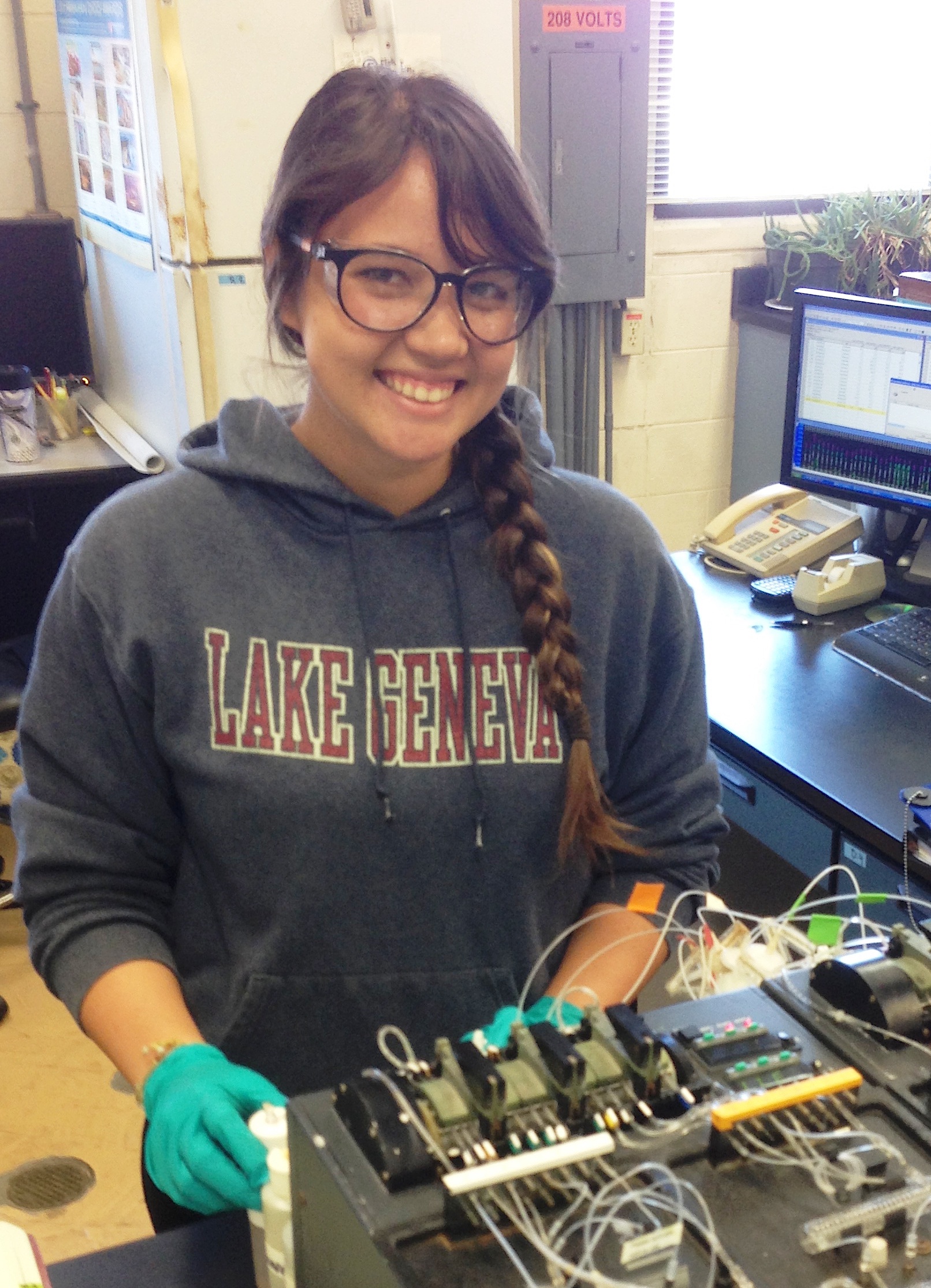
Delaney was born and raised in Kona on the Big Island. She graduated from Hawaii Preparatory Academy in 2012, and this fall, she will be a sophomore at Barnard College of Columbia University in New York City. She plans to earn her bachelor’s degree in Environmental Biology and pursue a master’s degree in Environmental Science and Policy. Delaney enjoys a cappella and classical voice as well as musical theatre, and plans to minor in Music.
Home Island: Big Island
High School: Hawaii Preparatory Academy
Institute when accepted: Columbia University
Akamai Project: Optimizing Oxidation Techniques: Measuring Nutrient Concentrations in Surface Seawater
Project Site: Natural Energy Laboratory of Hawaii Authority
Mentor: Keith Olson
The Natural Energy Lab of Hawaii Authority (NELHA) Water Quality Lab is responsible for monitoring the quality of ocean and groundwater surrounding the mariculture and aquaculture areas of the park. Nutrient analysis (nitrogen and phosphorus concentrations) is one of the key tests performed by the lab. NELHA’s nutrient analyzer measures only inorganic material; to measure total nutrient concentrations, one must first oxidize the water samples to convert the nutrients into an inorganic form. Oxidation agents and UV radiation are used to produce this reaction. Traditionally, NELHA has used hydrogen peroxide as the oxidizing agent. In this experiment, a surface seawater sample was taken and oxidized using four different potassium persulfate agents, as well as hydrogen peroxide, to determine the best oxidation procedure. In addition to varying the oxidation agent, length of time spent in the oxidation chamber was also tested to optimize the oxidation method. Results indicated similar phosphorus concentration, regardless of oxidation agent. However, nitrogen concentrations were consistently lower when hydrogen peroxide was used compared to the potassium persulfate agents. Finally, a glycine solution was used to spike organic nitrogen levels prior to oxidation to measure a percent recovery for the additional nitrogen; the potassium persulfate recovery was 95%, while the hydrogen peroxide recovery was 77% (of a spike of 100 ppb of nitrogen). Due to limitations in accuracy of the instrument used to measure nutrient concentrations, results from this study remain inconclusive. Despite these challenges, the study achieved positive outcomes. A substantial body of data was collected that can be used in future analysis of oxidation techniques. Additionally, two of the four potassium persulfate methods were identified as unsuitable for NELHA’s needs and eliminated from consideration. Future research should include further exploration of glycine as a check-standard for nitrogen, as well as the development of a check-standard for phosphorus levels.